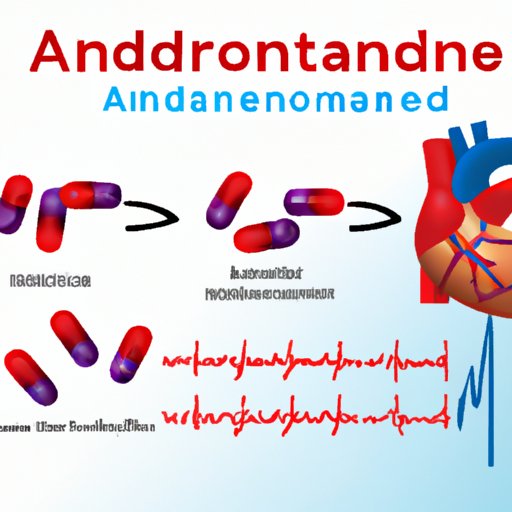Introduction
Amiodarone is a type of antiarrhythmic medication used to treat irregular heart rhythms (also known as cardiac arrhythmias). It belongs to a class of drugs called antiarrhythmics, which work by regulating the electrical activity of the heart. The electrical system of the heart controls the rate and rhythm of the heartbeat, and when this system is disrupted, it can cause dangerous cardiac arrhythmias. Amiodarone is one of the most commonly prescribed medications for treating these arrhythmias.
Exploring the Mechanism of Action of Amiodarone
In order to understand how amiodarone works, it is important to first understand the basics of cardiac arrhythmias. Cardiac arrhythmias occur when the electrical signals that control the heart’s rhythm are disrupted. This disruption can cause the heart to beat too fast, too slow, or in an irregular pattern. These arrhythmias can range from mild to life-threatening, and they can be caused by underlying medical conditions, certain medications, or even lifestyle factors such as stress or alcohol consumption.
Amiodarone works by targeting the electrical system of the heart. It blocks certain types of sodium, potassium, and calcium channels, which helps to regulate the electrical activity of the heart. In addition, it also has beta-blocking properties, which means it can block certain hormones that can cause the heart to beat too quickly. By blocking these channels and hormones, amiodarone can help to restore the regular rhythm of the heart.
How Does Amiodarone Work to Treat Cardiac Arrhythmias?
Amiodarone is typically used to treat two types of cardiac arrhythmias: ventricular tachycardia and atrial fibrillation. Ventricular tachycardia is a condition in which the lower chambers of the heart beat too quickly. Atrial fibrillation is a condition in which the upper chambers of the heart beat irregularly. Both of these arrhythmias can cause a variety of symptoms, including dizziness, shortness of breath, and chest pain.
The dosage and administration of amiodarone will depend on the type of arrhythmia being treated. For example, for ventricular tachycardia, the starting dose is usually 400 mg once a day. For atrial fibrillation, the starting dose is usually 200 mg twice a day. It is important to take amiodarone exactly as prescribed by your doctor and to not exceed the recommended dosage. Patients taking amiodarone should also be monitored regularly for any changes in their heart rate or rhythm.

The Benefits and Risks of Taking Amiodarone
When taken as prescribed, amiodarone can be effective in treating certain types of cardiac arrhythmias. It can help to reduce the frequency and severity of symptoms associated with these arrhythmias, and it can also reduce the risk of complications such as stroke. However, amiodarone also carries some risks, and it is important to be aware of these before starting treatment.

Examining the Side Effects of Amiodarone Treatment
Common side effects of amiodarone include nausea, vomiting, diarrhea, and headache. These side effects are usually mild and do not require medical attention. However, patients should contact their doctor if they experience any of the following serious side effects: difficulty breathing, chest pain, confusion, severe dizziness, or fainting.

Understanding How Amiodarone Interacts with Other Medications
It is important to tell your doctor about all the medications you are taking, including non-prescription medications, vitamins, and herbal supplements. Certain medications can interact with amiodarone and increase the risk of side effects. Additionally, amiodarone may interact with certain foods and alcoholic beverages. It is important to discuss the potential drug and food interactions with your doctor before taking amiodarone.
Conclusion
Amiodarone is a medication used to treat certain types of irregular heart rhythms. It works by blocking certain types of sodium, potassium, and calcium channels, as well as certain hormones, which helps to restore the regular rhythm of the heart. Amiodarone is typically used to treat ventricular tachycardia and atrial fibrillation, and the dosage and administration will depend on the type of arrhythmia being treated. While amiodarone can be effective in treating cardiac arrhythmias, it also carries some risks and can interact with other medications and certain foods and alcoholic beverages.
(Note: Is this article not meeting your expectations? Do you have knowledge or insights to share? Unlock new opportunities and expand your reach by joining our authors team. Click Registration to join us and share your expertise with our readers.)
